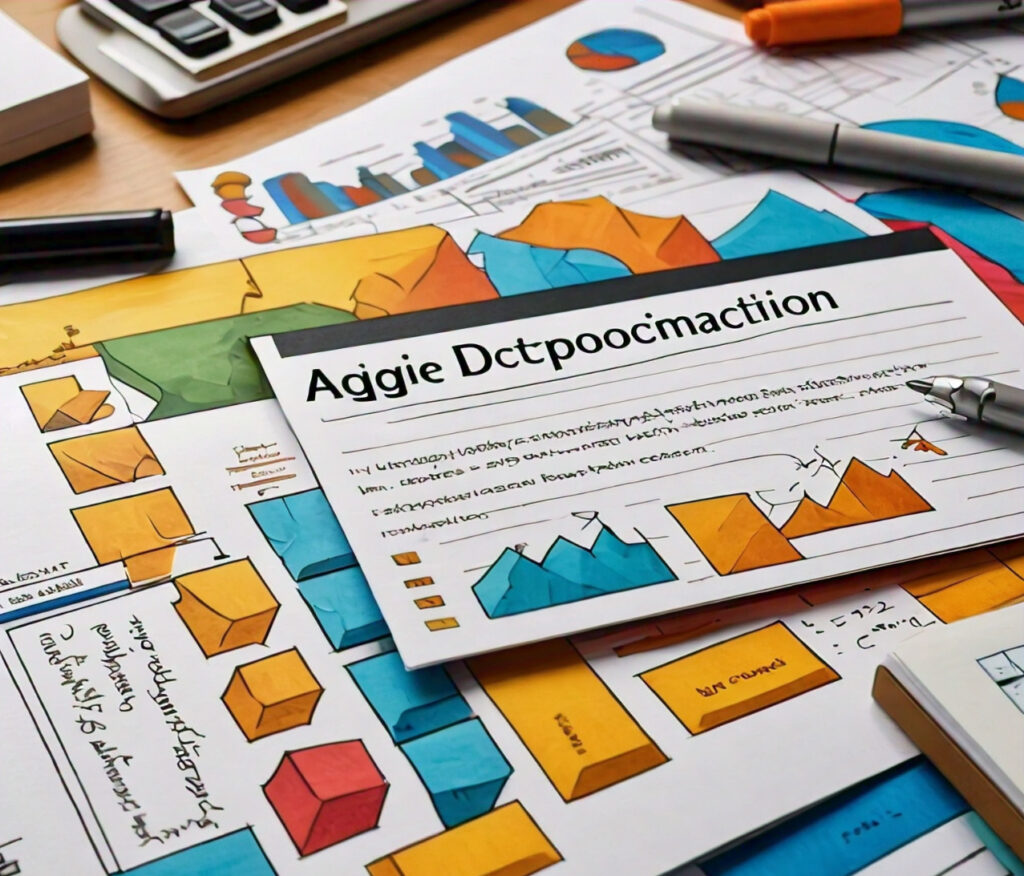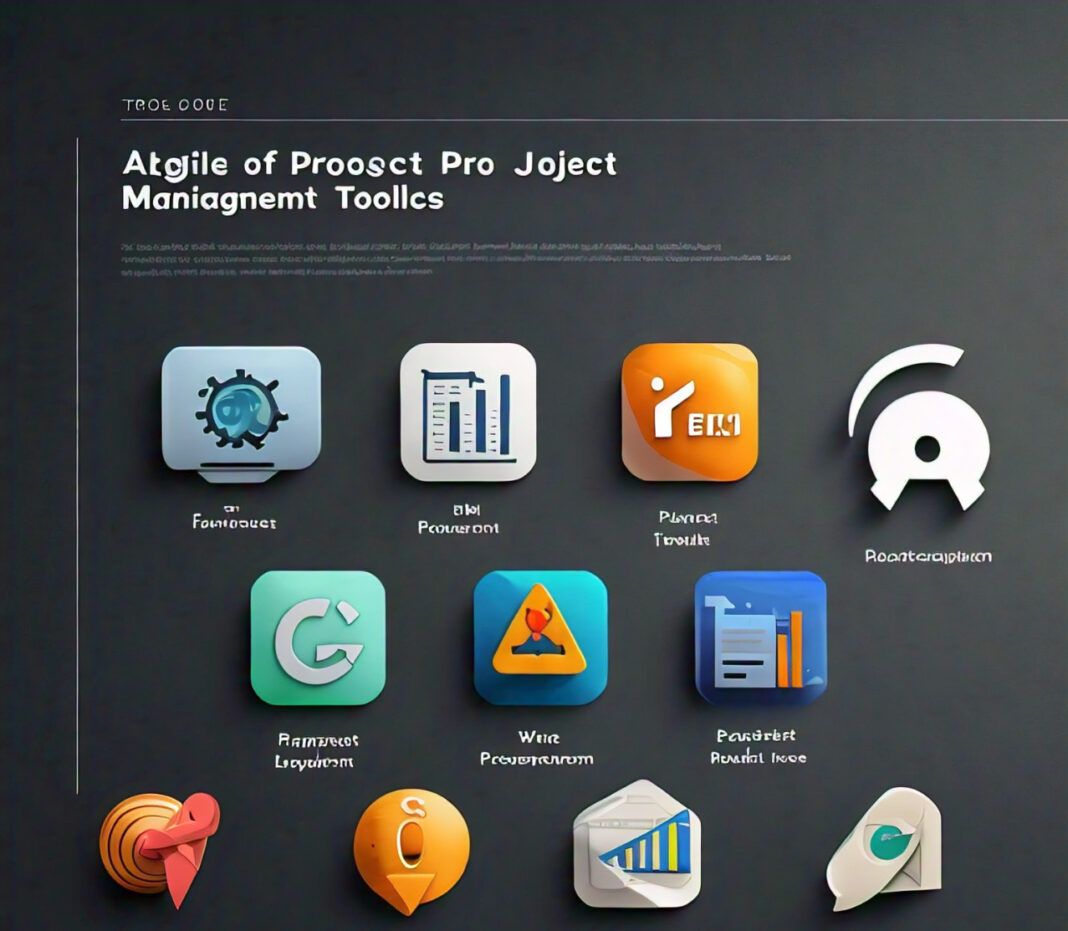Documentation is still scrupulously scrutinized and debated in Agile methodologies. Considering that Agile gives preference to people and their interaction, over processes and tools, it may seem that documentation follows in importance or that it does not proceed to be relevant at all.

But in fact, things are much more complicated. Thorough documentation has remained one of the critical parts of any Agile project; it just deals with balance on the thin wire between thoroughness and efficiency. It secures the balance, which makes sure that the purpose of documentation is met but it is not a burden or intervening with the Agile process.
The Role of Documentation in Agile
1. Purpose of Agile Documentation
Agile Documentation is of effective use as it serves a few key purposes, which are:
- Communication: Through it, members of the team and stakeholders can communicate clearly
with one another. Well-documented information helps all stay informed about the objectives,
requirements, and progress of work. - Knowledge Sharing: Documentation retains knowledge and expertise within the team. This is
important in various contexts: bringing new members up to speed, filling knowledge gaps, and
maintaining the continuity of the project. - Regulatory Compliance: For some domains, regulatory provisions, and standards may mandate
documentation in view. Proper documentation makes the project conform to such provisions.
2. Agile Principles and Documentation
Agile principles essentially revolve around being flexible and adaptable. They can be mapped quite
strongly in the context of documentation:
- Working Software Over Comprehensive Documentation: The Agile Manifesto values working
software as the primary measure of progress, meaning documentation is not overly comprehensive
and should not hamper the development process. - Responding to Change Over Following a Plan: Adaptability and responsiveness to change are
core principles of the agile methodology; it, therefore, means the documentation should shift with a
project and not be rigid.
Balancing Need and Efficiency
**1. Dangers of Over-Documentation
Some of the disadvantages of excessive documentation include:
Increased Overhead: It chews time and other resources in the creation and maintenance of
voluminous documentation, thereby reducing the time to be spent on development and other
activities.
Reduced Agility: Voluminous documentation decays quickly. Therefore, it becomes the source of
inconsistencies and reduced agility. Sometimes, updating the evolving needs of the project comprises
the time the whole team would spend on updating the documents.
Less Collaboration: Overemphasis on documentation may be counter-productive to face-to-face
communication and collaboration. Agile promotes direct communication over written records, and
too much documentation may divert attention from the spirit.
2. The Advantages of Low Documentation
Low documentation is consistent with Agile values and has the following advantages:
- More Efficiency: Taking only the minimum required time for documentation allows for
optimizations and savings in the overall time usage and the availability of more time for
development and collaboration.
Greater Flexibility: Lessened documentation allows for quick adaptation to change, including
the incorporation of feedback, without the drag of rigid documentation requirements.
Greater Collaboration: Emphasizing direct communication and interaction reduces reliance on
documents, therefore fostering better collaboration among team members.
Agile Documentation Best Practices
**1. Types of Documentation and Why They Are Needed
There is a multitude of documentation that serves varying purposes in Agile projects, but identifying
which is required and how to manage it most efficiently is crucial. These include the following:

- Product Backlog: A list of prioritized features, enhancements, and bug fixes. It should be
detailed enough to give clarity on what the project requires, but it should not be too detailed to make
the maintenance difficult. - User Stories – These are single-sentence requirements from the point of view of the end-user
that are supposed to be short and user-needs-centered; the acceptance criteria describe what it
means for this work to be completed. - Sprint Backlog – Here is described the work that is planned to be carried out this very sprint.
The sprint backlog should be updated frequently enough to show progress and alterations.
Documentation for Regulatory Compliance: Especially in regulated industries, requirements
often call for specific documentation so that products can comply with regulatory standards. Just
make sure such documentation is correct and current, but try avoiding overburdening.
2. Documentation Strategies
Using application documentation strategies accomplishes the goal of balancing the necessity for
documentation against the efficiency that too much can expend:
- Just Enough Documentation: Practice the “just enough” principle of documentation; only
supply what is needed to support development and communication. Avoid the creation of
unnecessary documents or details.
Living Documents: Use living documents—these documents evolve with the project.
Documentation needs to be frequently updated to reflect the project’s standing. - Automated Documentation: Generate and maintain documentation where possible by using
tools and automation. For instance, use automated tools to generate API documentation or test
reports. - Collaborative Documentation: Encourages collaboration on documenting documents where
the team members should contribute to and review the documents. This can help in getting accurate
and relevant documents.
3. Agile Ceremonies and Documentation
From agile ceremonies comes a way of creating and updating effective documentation:
- Sprint Planning: The document or update the user stories and the sprint backlog. Document
the requirements and tasks at the business essential level for the sprint during sprint planning. - Daily Stand-Ups: Daily stand-ups are to provide updates and follow up with progress; only
light documentation should be kept with prima facie evidence of scope changes or tasks. - Sprint Reviews: Document the feedback and outcomes from sprint reviews. Any changes or
new requirements arising out of the review should be captured and included in the product backlog. - Retrospectives: Lessons learned and action items from retrospectives need to be well
documented. Such documentation should thereafter spur continuous improvement and process
resolution.
Agile Documentation Tools and Aids
1. Agile Documentation Tools
These are the tools and techniques available to help ensure that documentation is ideally done within
an agile environment without losing the essence of agility. They include the following:
- Project Management Software: There are instances of Jira, Trello, and Asana concerning the documentation of work, tasks, user stories, and progress, among others, with collaboration features and real-time updates.
- Wiki Platforms: A wiki platform, such as Confluence or Notion, helps a team create and keep
living documentation. It encourages collaborative editing and easy progress tracking. - Version Control Systems: Use a version control system such as Git to help manage and
document code changes. It keeps a history of changes and allows for code collaboration
among developers.
2. Effective Documentation Techniques
Ensure a few techniques are followed that help ease up on the documentation :
- Template-Based Documentation: In this, the formats of documentation are standardized, and
the time to newly document something is reduced through templates. Thus, these templates can have
standard sections and formats for user stories, sprint backlogs, and other documents. - Documentation Dashboards: These are dashboards offering the team a high-level insight into
various key documentation elements, such as backlog items, sprint goals, and progress. It lets the
team have quick access and review of key information. - Visual Documentation: Diagrams, Flowcharts, and Wireframes. Visualization techniques are all
about explaining complex information through visual aids. Here, visual documentation proves
to be more accessible and easier than a long textual description.
Agile Documentation Challenges and Solutions:
1. Balance in Detail and Agility
Challenge: Achieving the correct and appropriate level of detail in documentation is not
always that easy. Detailing may kill agility or a lack of detail might create misunderstanding.
Solution: Document essential information that is needed to support the development and
communication. Use user stories, acceptance criteria, and key documentation elements to provide
clarity without being overly detailed.
2. Keeping Documentation Up-to-Date
Problem: There is always a challenge to keep the document up-to-date as the project moves ahead.
Documentation will often get outdated with the project changes, leading to wrong and inconsistent
communication.
Solution: Regularly review and update documentation. Documentation should be part of any update
made during the sprint review, retrospective, and other Agile ceremonies. Use living documents that evolve with the project.
** 3. Keeping Documentation Relevant**
Challenge: It can be a daunting task to ensure that documentation remains relevant and useful, more
so with changing requirements or priorities.
Solution: Align documentation with the project’s goals and requirements. Focus on documenting
information that directly supports development and communication. Avoid creating documentation
that is not actively used or required.
4. Documentation Overhead
Challenge: A common problem with documentation is overhead—documentation costs time and
resources that could have been put into development.
Solution: Streamline documentation processes by adopting “just enough” documentation” practices.
Leverage automation and collaborative tools to reduce manual effort, making documentation both efficient and effective.
Conclusion
A fine line between necessity and efficiency must be practiced tenderly within Agile documentation
if the support and success of the project are to be maintained through effective communication.
Where Agile methods preach flexibility and adaptability, proper documentation becomes central to
the software development process. The secret lies within following those practices that best reflect
Agile values while supplying the information required for development and collaboration.
This includes the principle of “just enough” documentation, living documents, the use of
automation, and the integration of documentation practices with Agile ceremonies. In following
these practices, teams make sure that documentation proves its value without becoming a burden on them or slowing them down.
Thoughtful strategies and continuous improvement in this area include how to strike a balance between detail and agility and keep the documentation up to date, relevant, and under control in terms of the overhead it incurs. Proper balance allows organizations to execute efficient and effective
documentation practices that will enhance communication, foster development, and drive project
success






